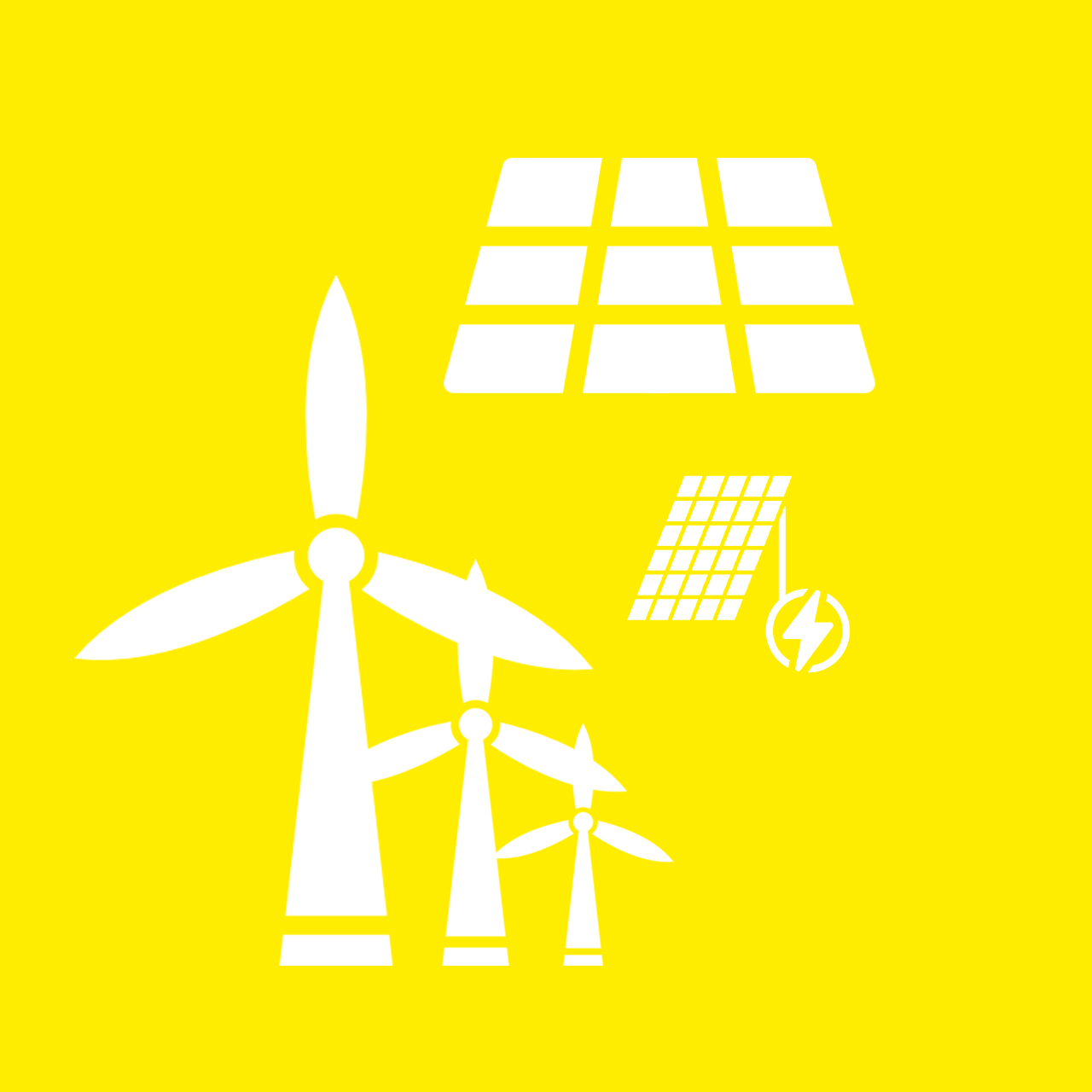Renewable energies are good — but it is also important to use them as efficiently as possible. The concepts for this are already in place. An analysis.
Enough sunlight falls on a surface area of 10 square meters to supply a household with energy for heating, electricity and mobility for e‑cars. This results from a simple calculation: If a household switches from conventional energy sources to renewable ones, its demand is reduced from an average of 24 MWh for heating, electricity and mobility (e‑vehicles) to a manageable 10 MWh. The reason for this is that around the 50th parallel, solar radiation provides approximately 1 MWh of energy per square meter per year. This means that the solar energy for such a household already falls on 10 square meters.
And what about at night or when there are lulls lasting weeks? Storage for hot water, battery storage for electricity, and long-term storage for wind energy (for example, through hydrolysis with reconversion via fuel cells) bring the energy from wind and sun into the evening hours, winter, and windless periods. A heat reservoir in the ground can also be used as long-term storage for the cold season in combination with heat pumps and solar thermal energy. If the efficiency of renewables is determined by how much surface area they require for the same yield, photovoltaics and solar thermal energy achieve a yield of between 200 and 600 kWh/m²a of electrical or thermal energy, i.e. a very good 20–60 percent yield on the surface area. Wind power still achieves 20–60 kWh/m²a. In the case of pure solar supply with photovoltaics, 50 square meters per household would thus be sufficient, or 500 square meters of wind surface.
The best renewables
The calculation shows how little area is actually required to cover our needs with the solar and wind energy that is available free of charge. And yet we pay for energy sources that formally count as renewables but require immensely more land. We are talking here about biogas and biofuels from agricultural crops. To obtain significant amounts of energy from these, huge areas of arable land have to be cultivated at great expense, using other valuable raw materials. This makes them by far the most inefficient renewables with an efficiency of only 0.6–5.9 kWh/m²a. This high land consumption is not economical—especially not in times of rapidly decreasing biodiversity and globally compromised food supplies. Only where biomass is produced anyway, for example as an agricultural by-product, is it a valuable energy source that can support municipal energy supplies.
But it is not only the small area required that makes wind and sun the best energy sources. If a household switches from gas heating, whether fossil or bio, to a heat pump, the energy yield is tripled, because from 1 MWh of electrical energy, it achieves 3 MWh of thermal energy for heating and hot water. An electrically powered vehicle also improves the energy balance by a factor of about 3: For a passenger car, 15 kWh per 100 km is calculated, which is equivalent to two liters of gasoline. This results in the significantly lower demand of 10 MWh instead of 24 MWh. Systems for industrial use achieve an even higher yield from geothermal energy. Switching to heat pumps, for example, therefore also significantly reduces energy requirements.
The self-sufficient municipality
Individual households can hardly implement this conversion on their own, but numerous projects show that municipal solutions can provide a secure and comprehensive supply based on renewables. Modern plant technology also contributes to this. In addition to combined heat and power plants, heat pumps and energy storage systems, modern converter systems are also part of the power supply. As energy sources are increasingly located at the municipal level, the energy supply will become more secure and stable. This particularly applies to the power supply networks, which can also be operated autonomously or as an emergency power supply in the event of a network failure. It follows from this: A sustainable energy supply must protect raw materials—and this includes the landscape, the raw material “surface area”, so to speak. Solar and wind power with a communal approach are by far the most efficient solution for this in mathematical terms.
AREA AND EFFICIENCY
The differences in terms of efficient use of land for energy production are enormous: While solar thermal energy in our latitudes needs about 1.7 m2 of land to produce 1 MWh/year, biodiesel from canola requires 500 m2 of cultivated land. The sun provides 1 MWh of energy per m2. And that’s how much of it can be harvested with renewables:
 60% SOLAR THERMAL
60% SOLAR THERMAL
 20% PHOTOVOLTAICS
20% PHOTOVOLTAICS
 5% WIND ENERGY
5% WIND ENERGY
 0,5% BIOGAS
0,5% BIOGAS
FROM CORN
 0,2% BIODIESEL
0,2% BIODIESEL
FROM CANOLA
 0,2% BIOETHANOL
0,2% BIOETHANOL
FROM STRAW
 0,1% BIOETHANOL
0,1% BIOETHANOL
FROM RYE
YOUR CONTACT

Do you have any questions about the project?
Christian Mayer is there for you:
Chr.Mayer@reinhausen.com
